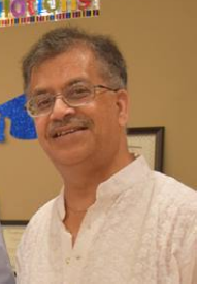Sachin Deb Burman's abilities as a talented singer were evident from a young age. He grew up in Comilla (in today's Bangladesh), and received early formal training from Krishna Chandra Dey, renowned devotional singer and uncle to the highly accomplished film and contemporary vocalist, Manna Dey. Additionally, he received further training early on from the accomplished classical vocalist Bhismadeva Chattopadhyay in the early 1930s, and also on the sarangi and the sitar from Ustad Badal Khan and none other than the instrumental maestro, Baba Alauddin Khan (father of Ustad Ali Akbar and father-in-law of Pandit Ravi Shankar). RM's essay throws a great bit more light on the musical evolution of SDB via Tripura (Agartala), Comilla, Calcutta, and eventually Bombay. As RM points out--SDB's voice would not qualify for a tenor or a baritone; in fact, during my own younger years, I have witnessed ongoing snickers amongst my fellow listeners (and this went on for years) regarding SDB's pronounced nasal tone. Yet to me, as with other things as well where I frequently tended to go against the grain, there was something absolutely special and uniquely gripping about SDB and his music. When I was less than ten years old (in the mid 1960s), a friend of the family whom my brother and I called Bhattacharjee Kaku (he was my Father's colleague Sanjit Bhattacharjee) sang a song on the harmonium at our home in Allahabad (far from Bengal) which was my first introduction to SDB. That song, O prem jomunaye hoyto keu dheu dilo dheu dilo re, was the first of SDB's songs with the characteristic nasal tone--and even though many decades have passed since that moment--listening to Bhattacharjee Kaku sing with nothing more than a harmonium this song of romantic love at a personal level struck me as something uniquely Bengali.
From that day in the mid-1960s forward, I have listened to SDB's songs in his own voice--having in the meantime relocated to Calcutta in 1968. Being in Calcutta (now Kolkata) meant being immersed in never-ending treasures of musical experiences, each segment of which could well form material for another essay. Suffice it to say that in the presence of such profound richness of musical creativity, I would personally never tire of listening to SDB songs and their connectedness to our Bengali roots, and that enjoyment and admiration continue to this day.
[1] Rajyeshwar Mitra, Agartalaye Sachin Dev Burman, Desh, vol. 62, no.5, Dec 1994.
[2] Ramaprasad Datta, ed. and author, Tripuraye Shatabdir Prabandhacharcha, 1985.
[2] Dwijendrachandra Datta, Rabindranath O Tripura- Tathyapanji, reprinted 1987.
[3] Sankarlal Bhattacharjee, A Case for Folk Music--S.D. Burman Interview, Hindustan Standard Magazine, March 19, 1972. Web URL: http://www.sdburman.net/website/Articles/Article_aCaseForFolkMusic.htm
(Note: You can view every article as one long page if you sign up as an Advocate Member, or higher).





